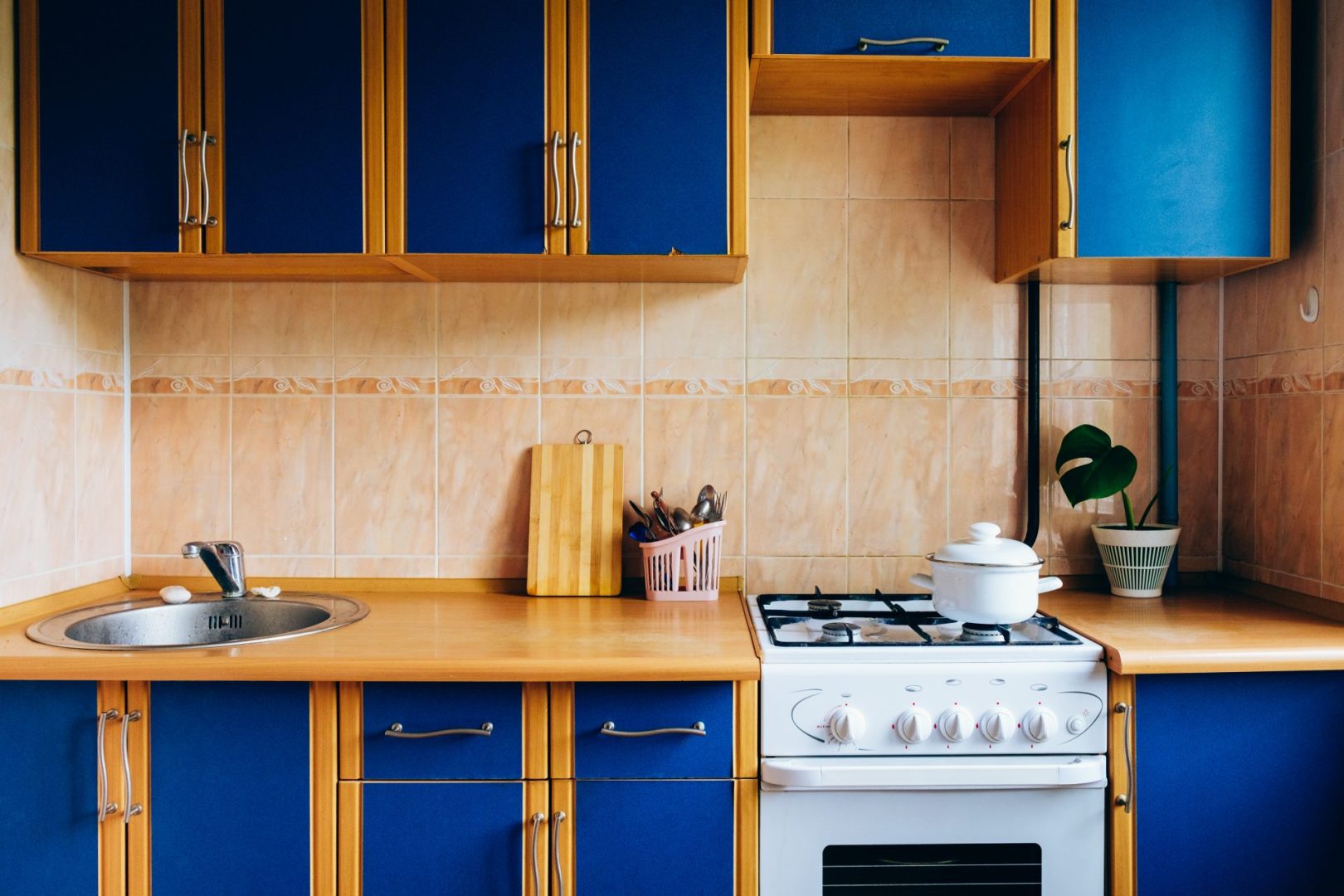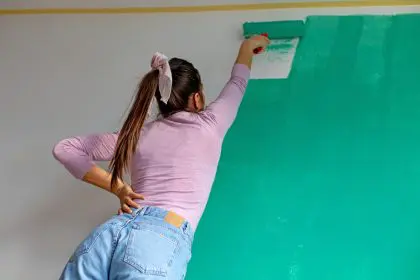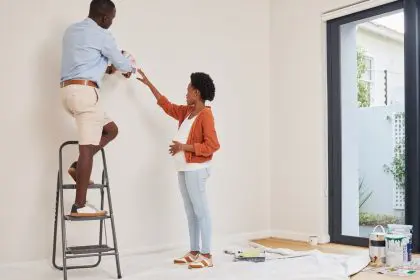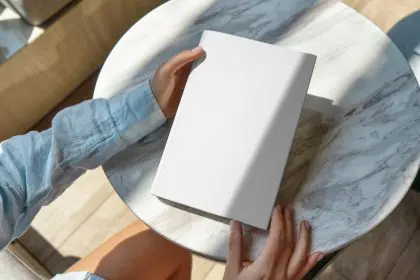Walking into certain homes immediately transports visitors back to 2005, when specific design trends dominated residential spaces across America. These once-popular features now serve as clear indicators of their era, creating dated impressions that can make otherwise well-maintained homes feel stuck in time.
The mid-2000s represented a unique period in home design, characterized by bold color choices, specific material preferences, and architectural details that seemed cutting-edge at the time. However, design evolution over the past two decades has left many of these elements looking distinctly outdated rather than timelessly elegant.
Understanding which features broadcast their 2005 origins helps homeowners identify areas for strategic updates that can dramatically modernize their living spaces. Often, these improvements require modest investments rather than major renovations, making them accessible options for most budgets and skill levels.
The psychology of dated design elements extends beyond mere aesthetics, affecting how spaces feel to occupants and visitors. Outdated features can make homes feel smaller, darker, or less welcoming than they actually are, while strategic updates create impressions of freshness and contemporary relevance.
Modern design trends emphasize clean lines, natural materials, and flexible functionality that contrasts sharply with the ornate, themed approaches popular twenty years ago. These contemporary preferences create opportunities for targeted improvements that align homes with current aesthetic standards while respecting individual style preferences.
Understanding the 2005 design landscape
The mid-2000s home design scene reflected broader cultural trends emphasizing abundance, decoration, and themed approaches to interior spaces. This period coincided with peak home renovation television programming that promoted dramatic transformations often involving bold color schemes and decorative excess.
Technology integration during this era remained primitive compared to current standards, leading to design solutions that now appear clunky or outdated as smart home systems have evolved. Entertainment centers, computer stations, and early flat-screen television mounting solutions created focal points that no longer serve contemporary needs.
Material preferences during 2005 favored manufactured options that promised durability and easy maintenance, though many of these choices now appear artificial or dated compared to current preferences for natural materials and authentic textures.
Color psychology understanding was limited during this period, leading to bold choices that seemed exciting initially but proved exhausting over time. The Instagram-worthy, camera-ready aesthetics that influence current design trends hadn’t yet emerged to moderate these dramatic approaches.
1. Tuscan-themed everything with faux finishes galore
The Mediterranean villa aesthetic dominated 2005 home design, with homeowners incorporating heavy wrought iron fixtures, artificial stone treatments, and warm earth-tone color schemes throughout their spaces. This themed approach created cohesive but often overwhelming environments that now feel costume-like rather than authentically elegant.
Faux painting techniques including sponge painting, rag rolling, and artificial aging treatments covered walls throughout homes, creating textured surfaces that were meant to suggest old-world character but often appeared obviously manufactured. These treatments typically required professional application and proved difficult to modify when tastes changed.
Modern upgrades focus on authentic materials and subtle textures that create interest without overwhelming spaces. Replacing faux finishes with quality paint in neutral colors provides clean backdrops for introducing natural materials through furniture, artwork, and accessories rather than permanent architectural elements.
Contemporary Mediterranean influences appear through carefully chosen accent pieces, natural stone or wood elements, and plants rather than comprehensive theming that dominates entire rooms. This approach allows for cultural appreciation without creating museum-like environments that feel disconnected from daily life.
Simple paint updates in warm whites, soft grays, or natural beiges immediately modernize spaces while providing versatile backgrounds for evolving decorative preferences. These neutral foundations support various accent colors and styles without requiring complete redesign when trends change.
2. Granite countertops with busy patterns and dark colors
The granite countertop boom of 2005 emphasized dramatic patterns, deep colors, and high-contrast veining that was meant to serve as statement pieces in kitchen and bathroom designs. While granite remains a quality material, the specific patterns and colors popular during this period now appear dated and often overwhelm contemporary design schemes.
Busy granite patterns with multiple colors created visual chaos that competed with other design elements rather than supporting overall room harmony. These surfaces often required coordinating multiple accent colors throughout spaces, limiting flexibility for future design changes.
Modern countertop preferences emphasize subtle patterns, lighter colors, and natural variations that complement rather than dominate room designs. Quartz surfaces with minimal veining, light granite options, or solid surface materials create clean backgrounds that highlight other design elements.
Upgrade approaches for existing granite depend on specific patterns and installation quality. Light-colored granites with subtle patterns often work well with contemporary designs when paired with updated cabinetry and fixtures, while heavily patterned dark surfaces may require replacement for dramatic modernization.
Alternative solutions include painting existing countertops with specialized countertop paint systems, applying concrete overlays, or installing new surfaces over existing granite in some situations. These approaches provide budget-friendly options for homeowners unable to afford complete countertop replacement.
3. Builder-grade oak cabinets with cathedral arch doors
Standard builder oak cabinets with prominent wood grain and cathedral-style raised panel doors dominated 2005 kitchen and bathroom designs. These mass-produced options provided affordable wood cabinetry but created heavy, dated appearances that now feel distinctly tied to their era.
The golden oak finish combined with ornate door profiles created busy visual textures that made spaces feel smaller and darker than necessary. These surfaces also showed fingerprints, water spots, and wear patterns that required frequent maintenance to maintain acceptable appearances.
Modern cabinet trends favor clean lines, minimal hardware, and either painted finishes or natural wood with subtle grain patterns. Flat-panel doors, simple Shaker styles, or handleless designs create contemporary appearances that feel fresh and timeless rather than trend-specific.
Cabinet painting represents the most cost-effective upgrade option, transforming dated oak into contemporary painted surfaces in whites, grays, or other neutral colors. This process requires proper preparation and quality materials but provides dramatic improvements for modest investments.
Hardware updates alone can significantly modernize existing cabinets, with contemporary pulls and knobs in brushed metals or matte black finishes providing instant updates. Removing some hardware entirely for a cleaner, handleless appearance also works with certain cabinet styles and budgets.
4. Brass fixtures and hardware throughout the home
Polished brass dominated 2005 fixture choices, from door handles and cabinet pulls to light fixtures and plumbing accessories. This warm metal finish was considered elegant and coordinating, but the specific bright, polished brass popular during this period now appears dated compared to current metal preferences.
The abundance of brass throughout homes created monotonous environments where every metallic element matched exactly, limiting visual interest and creating predictable, themed appearances. This coordination approach felt sophisticated initially but now seems rigid and outdated.
Contemporary metal trends favor mixed finishes, matte surfaces, and cooler tones like brushed nickel, oil-rubbed bronze, or matte black. These options provide sophistication while allowing for visual variety and personal expression through hardware choices.
Spray painting existing brass fixtures with appropriate metal paints provides budget-friendly updates that dramatically change room appearances. This approach works particularly well for items like cabinet hardware, light fixture frames, and decorative accessories.
Strategic replacement of the most visible brass elements creates significant impact without requiring comprehensive updates throughout entire homes. Focusing on frequently used items like door handles, faucets, and prominent light fixtures provides maximum visual improvement for targeted investments.
5. Popcorn ceilings that collect dust and date spaces
Acoustic textured ceilings, commonly called popcorn ceilings, provided affordable sound dampening and finish concealment during home construction booms. However, these surfaces now appear distinctly dated while creating practical problems including dust collection and maintenance difficulties.
The bumpy texture catches dust, cobwebs, and cooking residue that proves nearly impossible to clean effectively. Painting popcorn ceilings requires special techniques and often results in uneven coverage that highlights rather than conceals the textured surface.
Modern ceiling preferences emphasize smooth, clean surfaces that reflect light effectively while providing neutral backgrounds for room designs. Flat ceilings painted in whites or very light colors create impressions of height and openness that contrast sharply with textured alternatives.
Popcorn ceiling removal represents a significant project that may require professional assistance, particularly in older homes where asbestos concerns exist. However, the transformation from textured to smooth ceilings dramatically modernizes spaces while improving lighting and cleanliness.
Alternative approaches include installing new drywall or planking over existing popcorn ceilings, though these methods reduce ceiling height and require structural considerations. Some homeowners opt for decorative ceiling treatments like coffered designs or exposed beams that incorporate rather than eliminate existing textures.
6. Wall-to-wall carpeting in bold colors and busy patterns
Residential carpeting in 2005 often featured bold colors, geometric patterns, or floral designs intended to serve as room focal points. These statement carpets created coordinated environments but often overwhelmed spaces while limiting furniture and decorative flexibility.
Maintenance challenges with patterned carpeting included showing wear patterns, staining visibility, and cleaning difficulties that became more apparent over time. The bold designs that seemed exciting initially often proved exhausting in daily living situations.
Contemporary flooring trends emphasize neutral backgrounds that support rather than compete with furniture and decorative elements. Hardwood, luxury vinyl, tile, or neutral carpeting create versatile foundations for various design approaches while maintaining timeless appeal.
Carpet replacement with hard surface flooring provides the most dramatic modernization, though area rugs can be added for comfort and warmth. This approach allows for easy cleaning, better allergen control, and design flexibility through changeable rug selections.
Budget-conscious alternatives include professional carpet dyeing to neutral colors, strategic area rug placement to minimize pattern visibility, or gradual room-by-room flooring updates that spread costs over time while creating immediate improvements in priority spaces.
7. Oversized entertainment centers and bulky media furniture
The pre-streaming entertainment landscape required substantial furniture pieces to house televisions, audio equipment, DVD collections, and gaming systems. These massive entertainment centers dominated living rooms while creating dated focal points that reflect obsolete technology needs.
Built-in entertainment centers from this era often included elaborate lighting, multiple compartments, and decorative elements that now serve little functional purpose. These permanent installations can be particularly challenging to update or remove without significant renovation efforts.
Modern entertainment approaches emphasize minimal, wall-mounted televisions with concealed wiring and streamlined streaming device storage. This evolution eliminates the need for large furniture pieces while creating cleaner, more flexible room layouts.
Repurposing existing entertainment centers for book storage, display space, or home office functions can extend their useful life while reducing their visual dominance. Adding doors, changing hardware, or painting these pieces can modernize their appearance for alternative uses.
Complete removal and replacement with sleek media consoles or floating shelves creates the most contemporary appearance, though this approach requires furniture disposal and room layout reconsideration. The resulting open space often makes rooms feel larger and more current.
8. Themed bathroom suites with matching accessories
Bathroom design in 2005 often involved complete themed suites with matching towels, shower curtains, rugs, and accessories in coordinating colors and patterns. These approaches created cohesive but often overwhelming environments that now appear dated and restrictive.
Popular themes included tropical motifs, nautical designs, or country-inspired elements that dominated entire bathroom spaces. While individually attractive, these comprehensive themes created inflexible environments that felt more decorative than functional.
Contemporary bathroom design emphasizes spa-like serenity through neutral colors, natural materials, and minimal decorative elements. This approach creates timeless environments that feel relaxing and clean rather than busy or themed.
Simple updates like replacing shower curtains with clear glass doors, updating lighting fixtures, and choosing neutral paint colors can dramatically modernize themed bathrooms. Removing excessive decorative accessories creates cleaner, more sophisticated appearances.
Strategic replacement of the most dated elements while maintaining functional pieces provides budget-conscious modernization. Focusing on items like faucets, light fixtures, and major decorative elements creates significant visual impact without complete bathroom renovations.
9. Ornate light fixtures with excessive crystal and metalwork
Elaborate chandeliers and light fixtures featuring extensive crystal work, multiple tiers, and ornate metalwork served as statement pieces in 2005 home design. These fixtures often dominated rooms while creating maintenance challenges and appearing out of scale with contemporary furniture and design approaches.
The abundance of decorative elements in these fixtures created visual complexity that competed with other room elements rather than providing subtle illumination enhancement. Cleaning requirements for crystal and detailed metalwork also presented ongoing maintenance obligations.
Modern lighting trends favor clean lines, minimal decoration, and fixtures that complement rather than dominate room designs. Pendant lights, track lighting, and simple chandeliers provide necessary illumination while supporting overall design harmony.
Fixture replacement provides the most dramatic modernization, though rewiring requirements may necessitate professional electrical work. The impact of updated lighting often transforms entire room atmospheres while improving both function and aesthetics.
Partial updates like removing excess crystals, spray painting ornate metals, or replacing lampshades can modernize existing fixtures for homeowners unable to afford complete replacement. These modifications reduce visual complexity while maintaining functional lighting.
10. Computer nooks and dedicated office alcoves
Purpose-built computer stations and home office nooks reflected 2005 technology requirements including bulky desktop computers, printers, and extensive cable management needs. These dedicated spaces now often appear awkward and underutilized as technology has become more portable and wireless.
Built-in desk areas with overhead cabinets and side storage compartments created permanent office solutions that lack flexibility for changing technology needs. The specific proportions designed for older computer equipment now feel cramped and outdated for current devices.
Contemporary home office approaches emphasize flexibility, natural lighting, and spaces that can serve multiple functions rather than single-purpose built-ins. Laptop-friendly surfaces, wireless technology, and portable storage create adaptable work environments.
Repurposing computer nooks for display areas, small libraries, or craft storage provides alternative functions for these spaces. Removing some built-in elements or adding decorative lighting can transform office alcoves into attractive room features.
Complete renovation involving removal of built-in elements creates the most flexible solutions, though this approach requires construction work and room layout reconsideration. The resulting open space often improves room flow and provides opportunities for more versatile furniture arrangements.
Strategic upgrade planning for maximum impact
Successful home modernization requires prioritizing updates that provide the greatest visual impact while respecting budget constraints and lifestyle needs. Understanding which changes create the most dramatic improvements helps homeowners make strategic decisions about renovation investments.
High-impact, low-cost updates like paint color changes, hardware replacement, and lighting updates provide immediate modernization for modest investments. These improvements often transform room atmospheres without requiring major construction or professional installation.
Medium-investment projects including flooring updates, cabinet modifications, and fixture replacements create substantial improvements while remaining accessible for most homeowners. These changes typically require professional assistance but provide lasting value and significant visual transformation.
Major renovation decisions involving structural changes, built-in removal, or comprehensive room redesigns require careful planning and professional consultation. These investments provide the most dramatic results but need thorough consideration of costs, timeline, and lifestyle disruption.
Phased approaches allow homeowners to spread improvement costs over time while creating immediate benefits in priority areas. Starting with high-impact, low-cost changes builds momentum and confidence while generating savings for larger future projects.
Transforming 2005-era home features into contemporary designs requires understanding both the specific elements that date spaces and the strategic approaches that provide maximum modernization impact. These improvements enhance daily living experiences while protecting long-term property values through thoughtful, current design choices.

















